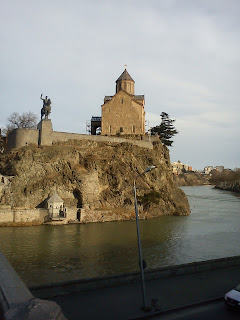Re-calling [forth] sustainable tourism
(#GreenShift #1)
While the green
shift is becoming more and more popular, it is worthy reviewing briefly how
sustainable tourism reached its current maturation.
In the last 3-2
decades of the last century a then limited number of ecological pioneers left
the circuit of the tourism industry (mass tourism on the mountains, sea&sand).
From the eighties the phenomenon began to grow, and eco-tourism, responsible
tourism, jungle-tourism began to conquer a significant niche. Since then,
sustainable tourism has turned from a niche to the fastest growing tourism sub-sector.
Ecotourism represents
a cultural change in the needs of tourists, who are increasingly aware of the
environmental impact that their presence generates and that in increasing
numbers consider a holiday spent in the nature a fully satisfactory form of
tourism. Ecotourism is part of sustainable tourism, and often the two terms are
used synonymously. However, it should be remembered that the urban environment
is also an ecosystem, therefore sustainability is to be practiced in urban
tourist destinations. In 1995 the World Tourism Organization (OMT) defined
sustainable tourism as the development of a way of doing tourism that meets the
needs of today's tourists and destinations, while protecting and increasing the
opportunities for the future. Sustainability understood in this way must be
applied to the environment, the socio-cultural sphere and the economy.
This implies
making optimal use of environmental resources, the cornerstone of a sustainable
tourism system, while keeping intact the fundamental ecological processes,
biodiversity and the cultural reality embedded in them.
Sustainable
tourism focuses on the protection of the socio-cultural authenticity of the
host communities, both in terms of material assets, monuments, artistic
artefacts, and in terms of traditional values and lifestyles. Through
protection and respect, the mechanisms of tolerance and intra-cultural
understanding can be triggered, one of the purposes of the tourism industry as
a whole.
As for economic
sustainability, the benefits of tourist presence must fall on the territory
that hosts it, creating jobs and business opportunities, social services and
contributing to the alleviation of poverty.
The temporal
perspective is both intra-generation and inter-generations: preserving tourist
goods means ensuring that not only well-being for today, but for future
generations. One of the risks of overtourism
(https://sustainableexperience.blogspot.com/2020/06/depopulated-destinations-since-when.html)
is that it leads to the depletion of the tourist resource (e.g. coral reef, or
damage to artistic property), compromising its attractiveness in the long term.


Commenti
Posta un commento